
Care: How to keep
How to keep:A HOW TO guide for long-lasting leather
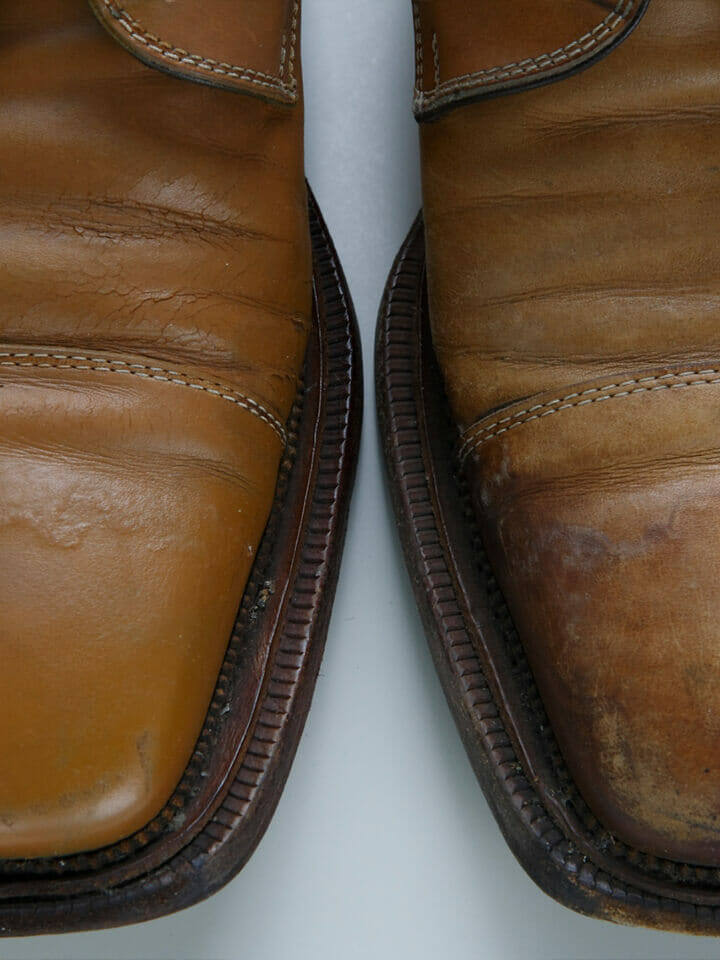
Leather, which contains a moderate amount of water and fat in the fiber, is a perfect condition for mold growth. If you don’t take care of leather, mold will grow easily. Especially troublesome is the mold that has penetrated into the leather tissue, and when this happens, there is no choice but to give up. Always keep leather goods in a breathable place. Also, once a shoe box becomes moldy, don’t reuse it.
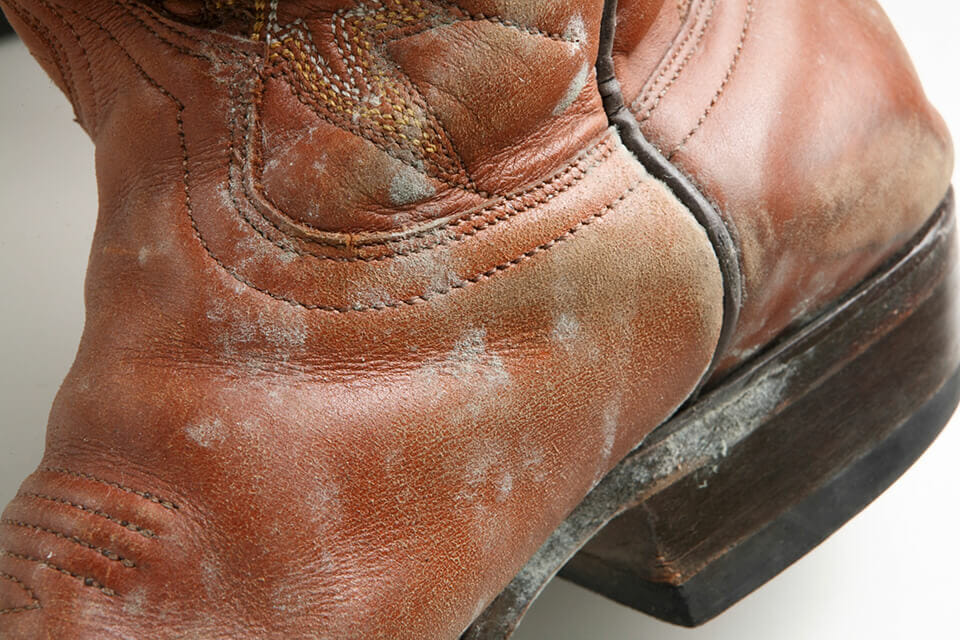
If the mold is only on the surface, it can be removed to some extent by wiping it with a damp and tightly wrung cloth and drying it in the shade.
By nature, leather absorbs water very well due to its fibrous nature. Some leathers are resistant to water depending on the dyeing method and finishing method, but basically they can be considered to be weak against water. Moisture changes the texture of the leather, which leaves a mark. When heat is applied to it, it may even harden and shrink. Therefore, if water droplets get on the leather, you want to wipe it off by tapping on it immediately.
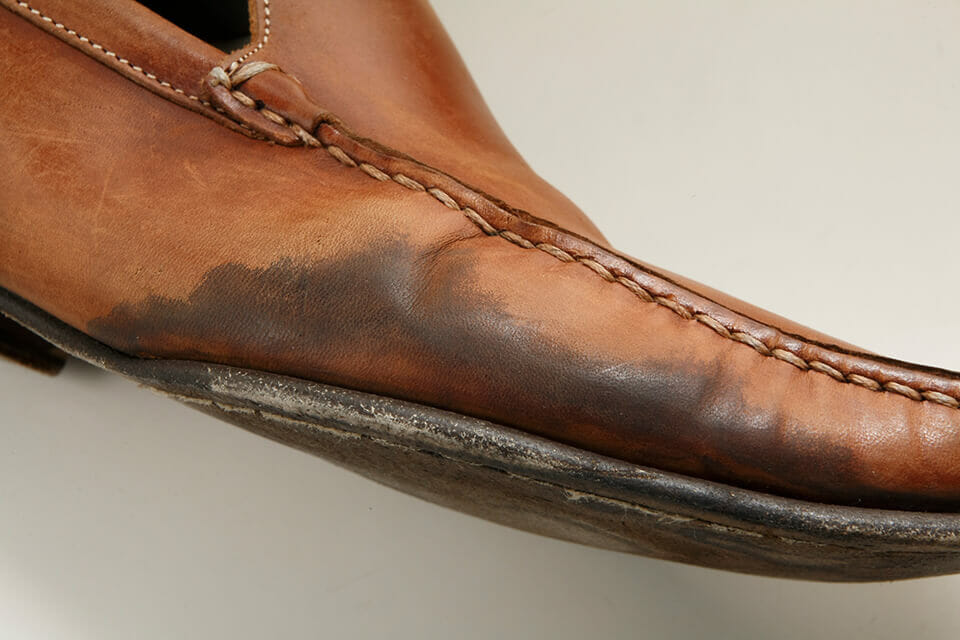
Experiment with an iron!
Moist leather is vulnerable to heat. If you try to dry it suddenly with an iron etc., it will shrink and become hard, so be careful.
Dirt and water stains are inevitable when using leather items. And also mold that grows without noticing it. These can be taken care of by a leather cleaner. They use a special detergent to wash it, and then carefully dry it for repair. It is quite difficult to wash leather products at home, so it is wise to have professionals do it.
A common principle for storing shoes, bags, clothing and leather goods is to keep them in a well-ventilated place. In addition, Japan's hot and humid climate is a bad condition for leather, so it is best to have a low temperature and low humidity environment if possible. If you want to store it in a closet, put it in the middle, take it out once a month, and dry it in the shade.
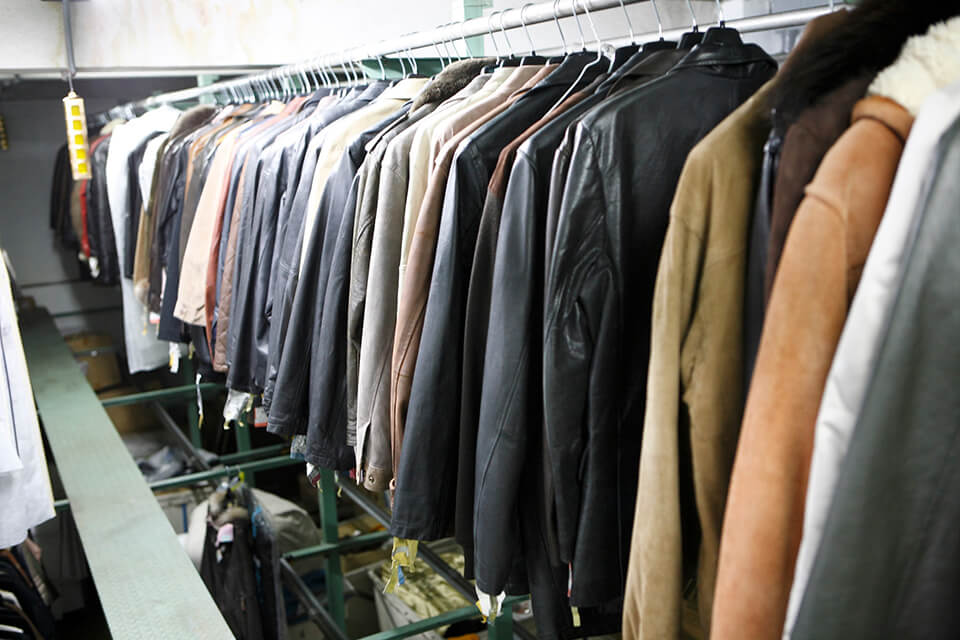
The basics of storing leather products are to avoid high temperature and humidity and to ensure breathability. At Tokyo Wholesale, if you add 500 yen to the cleaning fee, you can store your coats and boots in a storage room that maintains a temperature of 10 - 15 degrees Celsius and a humidity of 55% during the spring-autumn season.
The stretching of leather varies greatly depending on the type, age, gender, and part of the animal. In general, the abdomen stretches more easily than the back, and within the back, it stretches better in the direction orthogonal to the back muscle (back line) direction than in the same direction of the back muscle. Therefore, leather products are molded in consideration of the optimum position and orientation for the product. However, be aware that it may stretch if stored in unreasonable conditions.
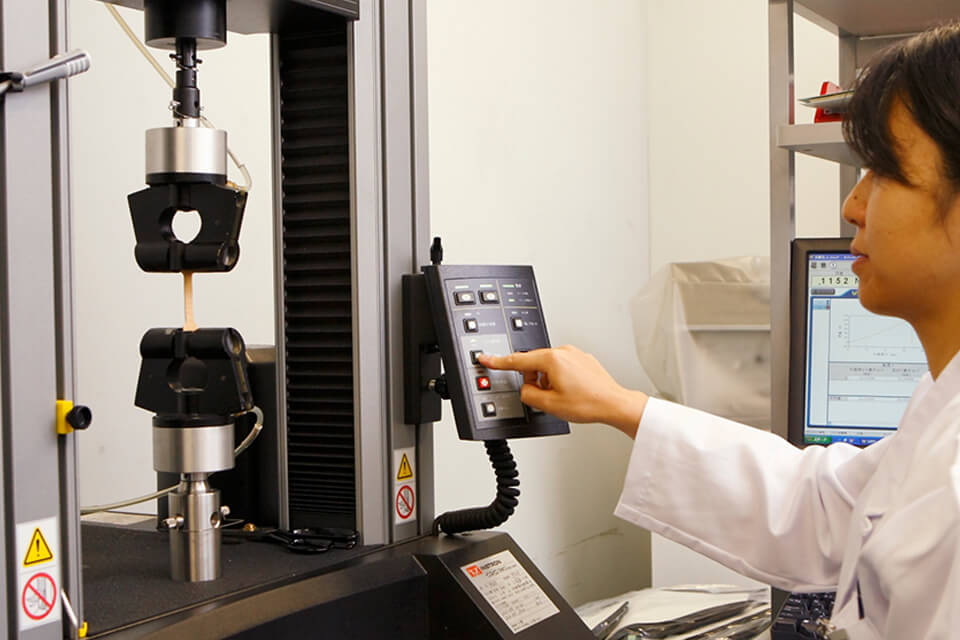
[Tensile strength and elongation] An experiment was conducted in which a piece of leather was artificially pulled. The test pieces were collected from pig leather in different parts and directions, but all of them eventually ripped when pulled with a large force. The test piece from the abdomen, which is softer than the back, and within the back, the piece stretched in the vertical direction to the back muscle direction, stretched more and then ripped.
Leather has the property of hardening and deforming when it is exposed to heat above the heat resistant temperature, and once it is deformed, it cannot be restored. The heat resistant temperature without this deformation is said to be about 120 ° C when dry. However, this depends greatly on the moisture contained in the leather, and when it gets wet, this temperature drops. Although it depends on the tanning method, it becomes about 60 to 100 ° C.

[Iron test] A test piece rubbed with a flat iron at 120 ° C, 160 ° C, or 240 ° C from the left. When the temperature became high, the part touched by the trowel became wavy. Since the leather of this part was stretched and hardened compared to the surrounding part, it was deformed in a wavy manner. If this happens, it cannot be restored.
Examples of the method of coloring leather include dyeing in a water tank, painting with a spray or a brush, and printing. The degree of discoloration varies depending on the type and finish of the dye, but the tendency is that uncoated leather, brushed leather, and leather with a natural finish tend to discolor due to friction. Also, be aware that discoloration often becomes more severe when the leather gets wet.
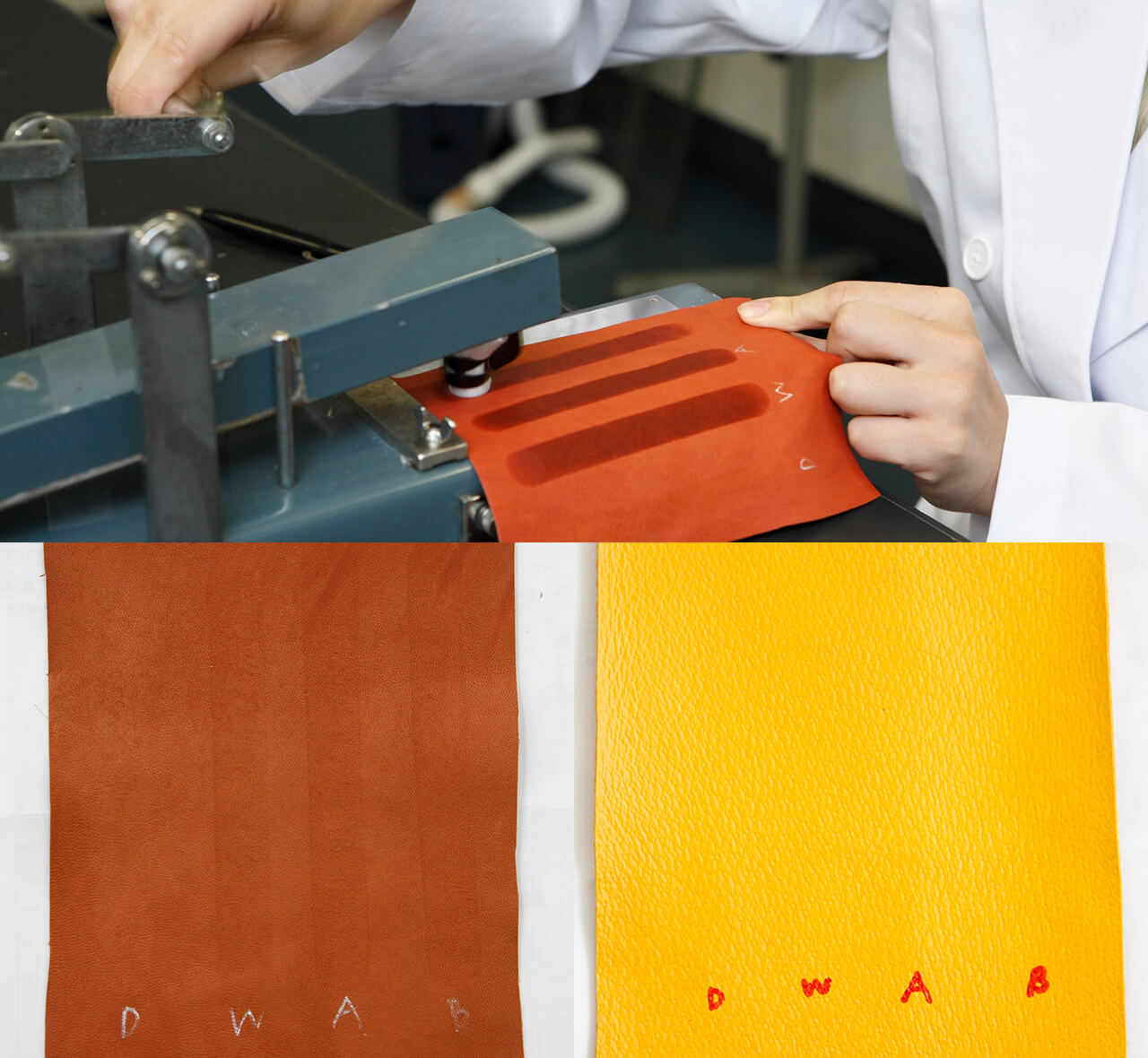
[Testing the color fastness to rubbing] Cover the friction element with a white cotton cloth and rub the surface of the leather test piece. The white cloth is prepared in a dry state, soaked in distilled water, acid artificial sweat solution, and alkaline artificial sweat solution. The pigmented leather did not fade much, but the bare leather faded with sweat.
Any substance is degraded by sunlight, but leather is particularly vulnerable. It also depends on the tanning method, coloring method, the dye and its concentration. In general, vegetable based tanning is more likely to change than chrome tanning and tends to turn brown. As for colorants, dyes are more likely to change color than pigments. Among them, light-colored leather has a large degree of fading and is easily noticeable.
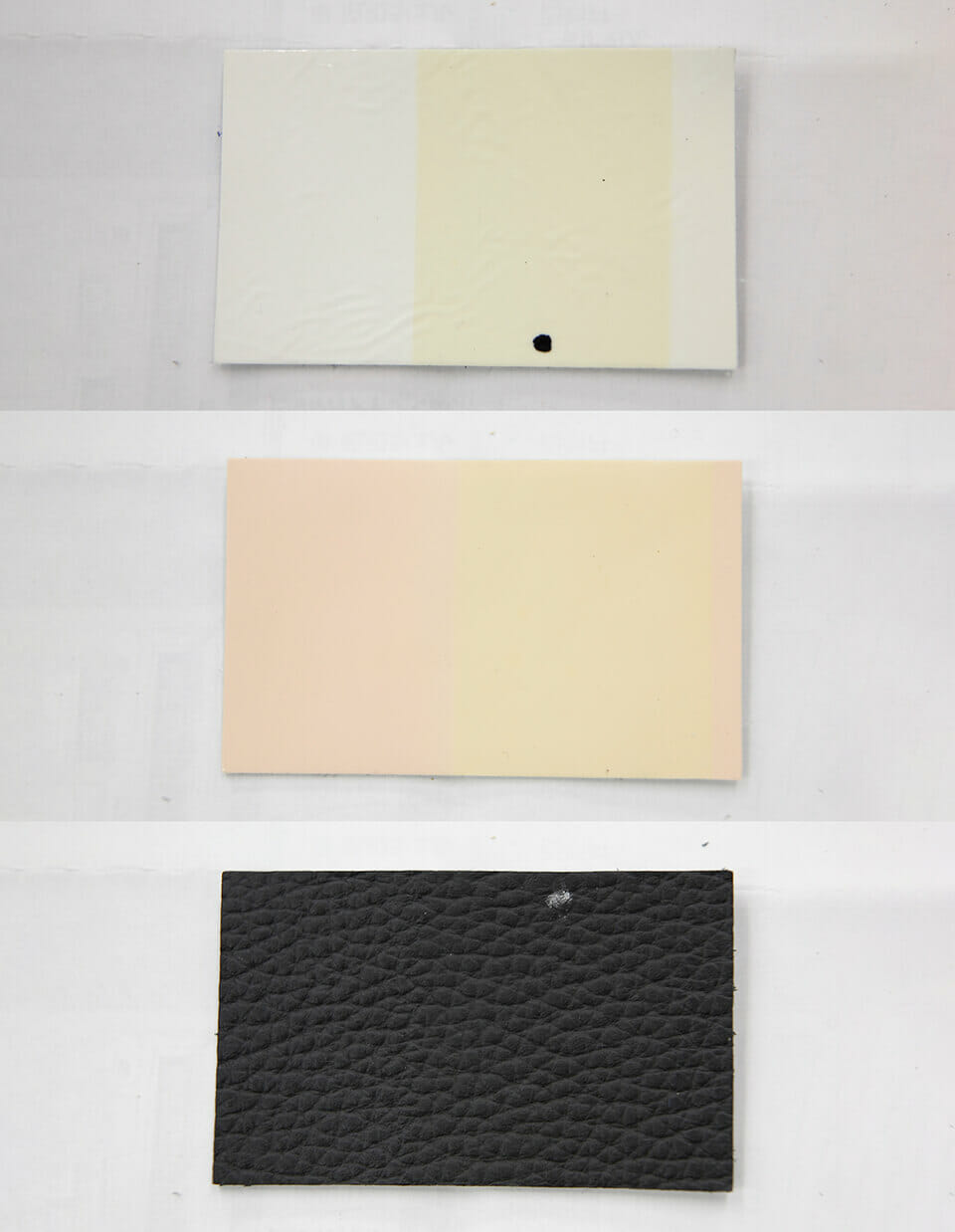
[Light resistance test] A leather piece is placed in a light resistance tester that can be tested by simulating exposure to sunlight. The photo on the right shows the result of shining light under certain conditions. The white ones turned yellowish. On the other hand, the dark black did not change much.
When leather gets wet, it soaks in the water, and when it dries, it may stain or the surface may become uneven like blisters. Therefore, there are leathers that are finished with lacquer or urethane to make it difficult to absorb water. Avoid getting brushed leather that does not have such a protective film wet, and tap off the water as soon as it gets wet.
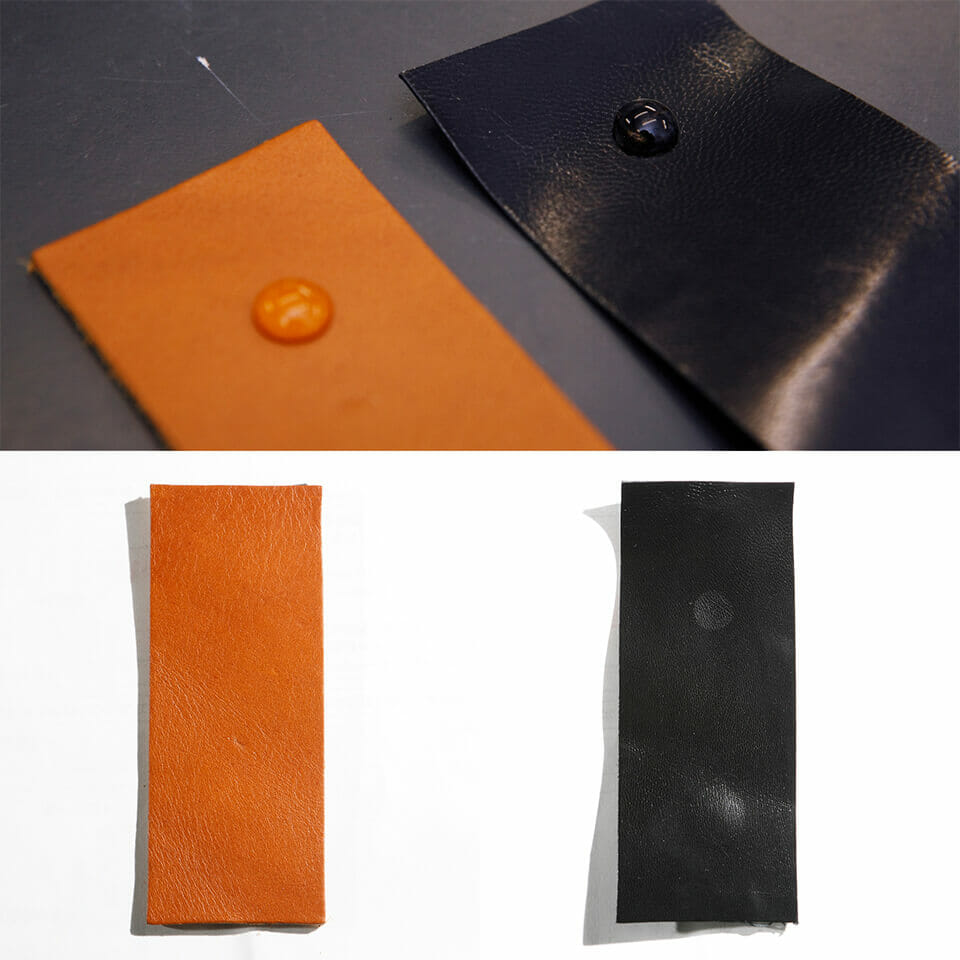
[Water drop test] Observation of the surface condition when water drops are dropped on the test piece and wiped off 30 minutes and 16 hours later. There are no traces on the brown leather piece even after 16 hours. On the other hand, on the black leather piece,there was almost no change in color, but after 16 hours, water spots such as blisters appeared clearly. This difference is related to the surface treatment of the leather.